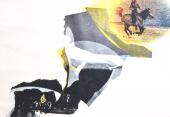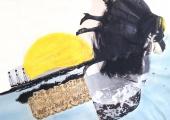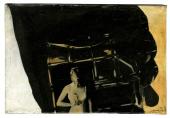“Apart from its aesthetic condition (a question that can be partially related to the notion of taste), art must be an element of communication and critical contribution. From this, art can have a voice in the renewal of culture. In any case, I only conceive it as a testimony that provides data and raises questions about society, history and art.”
(Joan Rabascall, 1976)
Ironic, biting and provocative, the work of Joan Rabascall (Barcelona, 1935) has always revolved around political and social denunciation. After settling in Paris in 1962, thanks to a scholarship to study at the Ecole Nationale des Beaux-Arts, he began to develop his career as a conceptual artist. Rabascall uses his art as a denunciation of traditional art forms, questioning even those that until now had been ideal concepts, like beauty, technique or quality, by using new supports and artistic materials such as digital printing, photographic reproduction or video. A real break with previous artistic and aesthetic conventions; from now on, the idea or concept takes on a fundamental value.

















